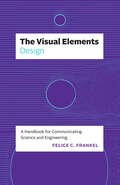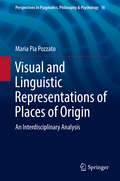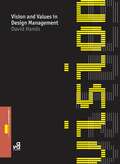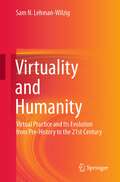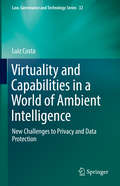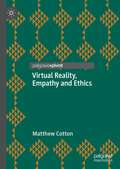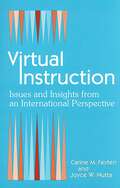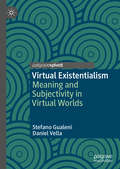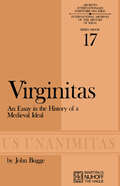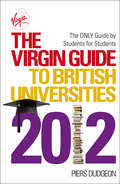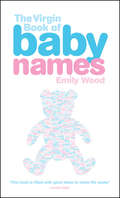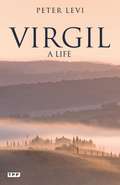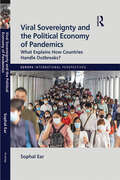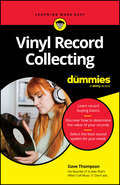- Table View
- List View
The Visual Elements—Design: A Handbook for Communicating Science and Engineering (The Visual Elements)
by Felice C. FrankelWith insights and examples from designers at publications from Nature to the New York Times, an essential guide to creating figures and presentations. In this short handbook, award-winning science communicator Felice C. Frankel offers a quick guide for scientists and engineers who want to share—and better understand—their research by designing compelling graphics for journal submissions, grant applications, presentations, and posters. Like all the books in the Visual Elements series, this handbook is also a training tool for researchers. Distilling her celebrated books and courses to the essentials, Frankel shows scientists and engineers, from students to primary investigators, the importance of thinking visually. This crucial volume in the Visual Elements series offers a wealth of engaging design examples. Case studies and advice from designers at prestigious publications and researchers’ own before-and-after examples show how even the smallest changes—to color, type, composition, and layering—can greatly improve communication. Ideal for researchers who want a foothold for presenting and preparing their work for everything from conferences to publications, the book explains the steps for creating a concise and communicative graphic to highlight the most important aspects of research—and to clarify researchers’ own thinking. The resulting book is an essential element of any scientist’s, engineer’s, or designer’s library.
The Visual Elements—Design: A Handbook for Communicating Science and Engineering (The Visual Elements)
by Felice C. FrankelWith insights and examples from designers at publications from Nature to the New York Times, an essential guide to creating figures and presentations. In this short handbook, award-winning science communicator Felice C. Frankel offers a quick guide for scientists and engineers who want to share—and better understand—their research by designing compelling graphics for journal submissions, grant applications, presentations, and posters. Like all the books in the Visual Elements series, this handbook is also a training tool for researchers. Distilling her celebrated books and courses to the essentials, Frankel shows scientists and engineers, from students to primary investigators, the importance of thinking visually. This crucial volume in the Visual Elements series offers a wealth of engaging design examples. Case studies and advice from designers at prestigious publications and researchers’ own before-and-after examples show how even the smallest changes—to color, type, composition, and layering—can greatly improve communication. Ideal for researchers who want a foothold for presenting and preparing their work for everything from conferences to publications, the book explains the steps for creating a concise and communicative graphic to highlight the most important aspects of research—and to clarify researchers’ own thinking. The resulting book is an essential element of any scientist’s, engineer’s, or designer’s library.
Visual and Linguistic Representations of Places of Origin: An Interdisciplinary Analysis (Perspectives in Pragmatics, Philosophy & Psychology #16)
by Maria Pia Pozzato Alessandra Bonazzi Enzo D'Armenio Paola Donatiello Emanuele Frixa Giulia Mazzeo Federico Montanari Margherita Murgiano Giulia NardelliThis book is about the representations - both visual and linguistic - which people give of their own places of origin. It examines the drawings of interviewees who were asked to draw their own place of origin on a white A3 sheet, using pencil or colour, according to their choice. If they were born in a place they did not remember because they moved in when they were very small, they could draw the place they did remember as the scenario of their early childhood. The drawings are examined from three different perspectives: semiotics, cognitive psychology and geography. The semiotic instruments are used to describe how each person reconstructs a complex image of his/her childhood place, and how they translate their own memories from one language to another, e.g. from drawing to verbal story, trying to approach what they want to express in the best possible way. The cognitive-psychological point of view helps clarify the emotional world of the interviewees and their motivations during the process of reconstruction and expression of their childhood experiences. The geographical conceptualizations concern a cultural level and provide insight into the cartographic models that inspire the maps people drew. One of the main findings was the influence from cultural codes as demonstrated in the fact that most of the US students interviewed drew their maps showing considerable cartographic expertise in comparison to their European counterparts.
Vision and Values in Design Management (Required Reading Range)
by David HandsVision and Values in Design Management explores the value of design as a key strategic resource that can be utilized in the pursuit of securing a competitive advantage within highly complex and emergent markets. Throughout the book, David Hands offers contributions from key thinkers and practitioners drawn from both industry and academia to provide an essential guide to the development, key issues and future directions of design management.
Vision and Values in Design Management (Required Reading Range)
by Dr David HandsVision and Values in Design Management explores the value of design as a key strategic resource that can be utilized in the pursuit of securing a competitive advantage within highly complex and emergent markets. Throughout the book, David Hands offers contributions from key thinkers and practitioners drawn from both industry and academia to provide an essential guide to the development, key issues and future directions of design management.
Virus: An Illustrated Guide to 101 Incredible Microbes
by Marilyn J. RoossinckAn essential illustrated guide to the 101 most fascinating virusesThis stunningly illustrated book provides a rare window into the amazing, varied, and often beautiful world of viruses. Contrary to popular belief, not all viruses are bad for you. In fact, several are beneficial to their hosts, and many are crucial to the health of our planet. Virus offers an unprecedented look at 101 incredible microbes that infect all branches of life on Earth—from humans and other animals to insects, plants, fungi, and bacteria.Featuring hundreds of breathtaking color images throughout, this guide begins with a lively and informative introduction to virology. Here readers can learn about the history of this unique science, how viruses are named, how their genes work, how they copy and package themselves, how they interact with their hosts, how immune systems counteract viruses, and how viruses travel from host to host. The concise entries that follow highlight important or interesting facts about each virus. Learn about the geographic origins of dengue and why old tires and unused pots help the virus to spread. Read about Ebola, Zika, West Nile, Frog virus 3, the Tulip breaking virus, and many others—how they were discovered, what their hosts are, how they are transmitted, whether or not there is a vaccine, and much more. Each entry is easy to read and includes a graphic of the virus, and nearly every entry features a colorized image of the virus as seen through the microscope.Written by a leading authority, this handsomely illustrated guide reveals the unseen wonders of the microbial world. It will give you an entirely new appreciation for viruses.
Virus: An Illustrated Guide to 101 Incredible Microbes
by Marilyn J. Roossinck Carl ZimmerThis stunningly illustrated book provides a rare window into the amazing, varied, and often beautiful world of viruses. Contrary to popular belief, not all viruses are bad for you. In fact, several are beneficial to their hosts, and many are crucial to the health of our planet. Virus offers an unprecedented look at 101 incredible microbes that infect all branches of life on Earth—from humans and other animals to insects, plants, fungi, and bacteria.Featuring hundreds of breathtaking color images throughout, this guide begins with a lively and informative introduction to virology. Here readers can learn about the history of this unique science, how viruses are named, how their genes work, how they copy and package themselves, how they interact with their hosts, how immune systems counteract viruses, and how viruses travel from host to host. The concise entries that follow highlight important or interesting facts about each virus. Learn about the geographic origins of dengue and why old tires and unused pots help the virus to spread. Read about Ebola, Zika, West Nile, Frog virus 3, the Tulip breaking virus, and many others—how they were discovered, what their hosts are, how they are transmitted, whether or not there is a vaccine, and much more. Each entry is easy to read and includes a graphic of the virus, and nearly every entry features a colorized image of the virus as seen through the microscope.Written by a leading authority, this handsomely illustrated guide reveals the unseen wonders of the microbial world. It will give you an entirely new appreciation for viruses.
Virtuous Thoughts: The Philosophy of Ernest Sosa (Philosophical Studies Series)
by John TurriThis collection is a major contribution to the understanding and evaluation of Ernest Sosa’s profound and wide-ranging philosophy, in epistemology and beyond. A balanced, fair and critical volume, it offers a sensitive appreciation of his wide philosophical purview, a nuanced assessment of the detail of his thought, and a spur to exploring the linkages between the varied topics explored by the subtle mind of this great American scholar.The papers explore a wealth of Sosa’s academic interests, including his work on philosophical method, the philosophy of mind and language, metaphysics, and value theory, in addition to his output on epistemology itself. It offers, for example, a rebuttal of the counterarguments to Sosa’s reliabilist theory of introspective justification, which itself concludes with some objections to Sosa’s stated views on the ‘speckled hen’ problem. Other authors track the connections of his virtue theory to his advocacy of bi-level epistemology, provide reflections on Sosa’s views on the epistemological tradition, and examine the nexus of his beliefs on intuition and philosophical methodology. This volume is an insightful reckoning of Sosa’s academic account.
Virtuality and Humanity: Virtual Practice and Its Evolution from Pre-History to the 21st Century
by Sam N. Lehman-WilzigThis is a pioneering study of virtuality through human history: ancient-to-modern evolution and recent expansion; expression in many fields (chapters on Religion; Philosophy, Math, Physics; Literature and the Arts; Economics; Nationhood, Government and War; Communication); psychological and social reasons for its universality; inter-relationship with "reality." The book's thesis: virtuality was always an integral part of humanity in many areas of life, generally expanding over the ages. The reasons: 1- brain psychology; 2- virtuality's six functions — escape from boredom to relieving existential dread. Other questions addressed: How will future neuroscience, biotech and "compunications" affect virtuality? Can/should there be limits to human virtualizing?
Virtuality and Capabilities in a World of Ambient Intelligence: New Challenges to Privacy and Data Protection (Law, Governance and Technology Series #32)
by Luiz CostaThis book is about power and freedoms in our technological world and has two main objectives. The first is to demonstrate that a theoretical exploration of the algorithmic governmentality hypothesis combined with the capability approach is useful for a better understanding of power and freedoms in Ambient Intelligence, a world where information and communication technologies are invisible, interconnected, context aware, personalized, adaptive to humans and act autonomously. The second is to argue that these theories are useful for a better comprehension of privacy and data protection concepts and the evolution of their regulation. Having these objectives in mind, the book outlines a number of theses based on two threads: first, the elimination of the social effects of uncertainty and the risks to freedoms and, second, the vindication of rights. Inspired by and building on the outcomes of different philosophical and legal approaches, this book embodies an effort to better understand the challenges posed by Ambient Intelligence technologies, opening paths for more effective realization of rights and rooting legal norms in the preservation of the potentiality of human capabilities.
Virtual Reality, Empathy and Ethics
by Matthew CottonThis book examines the ethics of virtual reality (VR) technologies. New forms of virtual reality are emerging in society, not just from low-cost gaming headsets, or augmented reality apps on phones, but from simulated “deep fake” images and videos on social media. This book subjects the new VR technological landscape to ethical scrutiny: assessing the benefits, risks and regulatory practices that shape it. Though often associated with gaming, education and therapy, VR can also be used for moral enhancement. Journalists, artists, philanthropic and non-governmental organisations are using VR films, games and installations to stimulate user empathy to marginalised peoples through a combination of immersion, embodiment and persuasion. This book critically assesses the use of VR for empathy arousal and pro-social behaviour change, culminating in the development of a VR “ethical tool” – a device to facilitate reflective ethical judgement. Drawing upon the pragmatist philosophy of John Dewey, virtual reality is reshaped as “dramatic rehearsal”. This book explains how a combination of immersive environment-building, moral imagination, choice architecture and reflective engagement can stimulate a future-focused and empathic ethics for users of the technology.
Virtual Lives: A Reference Handbook (Contemporary World Issues)
by James D. Ph.D.This book is the THE source for information on virtual worlds, covering every aspect of this intriguing and fast-changing social practice and the technologies upon which it rests.Virtual Lives: A Reference Handbook describes the history, development, and role of virtual worlds, also known as virtual environments and immersive virtual environments. It provides detailed background about virtual worlds and their societal impact, from early precursors and inspirations to the latest trends and developments. Specifics on user demographics are included, as are descriptions of virtual worlds' functions, discussion of societal concerns and opportunities, and information about relevant research data and key persons and organizations.Although virtual worlds in their current form are a relatively new phenomenon, other online social environments have served as precursors for decades and literary inspirations go back even further. This handbook therefore covers some early developments dating back to the mid-20th century. Its primary focus, however, is on developments since the mid-1990s and especially on the current state and social impact of virtual worlds, including their impact both in the United States and around the world.
Virtual Lives: A Reference Handbook (Contemporary World Issues)
by James D. Ph.D.This book is the THE source for information on virtual worlds, covering every aspect of this intriguing and fast-changing social practice and the technologies upon which it rests.Virtual Lives: A Reference Handbook describes the history, development, and role of virtual worlds, also known as virtual environments and immersive virtual environments. It provides detailed background about virtual worlds and their societal impact, from early precursors and inspirations to the latest trends and developments. Specifics on user demographics are included, as are descriptions of virtual worlds' functions, discussion of societal concerns and opportunities, and information about relevant research data and key persons and organizations.Although virtual worlds in their current form are a relatively new phenomenon, other online social environments have served as precursors for decades and literary inspirations go back even further. This handbook therefore covers some early developments dating back to the mid-20th century. Its primary focus, however, is on developments since the mid-1990s and especially on the current state and social impact of virtual worlds, including their impact both in the United States and around the world.
Virtual Instruction: Issues and Insights from an International Perspective (Non-ser.)
by Carine M. Feyten Joyce NuttaThroughout the world, schools, universities, and industry have begun to use virtual instruction to expand their outreach to learners and to promote collaboration and exchange among educators. As these virtual communities encompass the globe, questions regarding the nature of teaching learning, and communicating in a technology-embedded, multicultural, and border-free environment have arisen. The essays in this book clarify predominant theoretical issues that pertain to this new form of computer-mediated, interactive distance learning and offer practical suggestions for implementing virtual instruction programs. Addressing a variety of instructional technologies (e.g., web-based instruction, videoconferencing), the book examines virtual instruction from different perspectives, including economics, sociology, communication, and learning theory. Invaluable to educators and students of teacher education, instructional design, technology, and communication, the book will appeal to anyone involved in or w
Virtual Existentialism: Meaning and Subjectivity in Virtual Worlds
by Stefano Gualeni Daniel VellaThis book explores what it means to exist in virtual worlds. Chiefly drawing on the philosophical traditions of existentialism, it articulates the idea that — by means of our technical equipment and coordinated practices — human beings disclose contexts or worlds in which they can perceive, feel, act, and think. More specifically, this book discusses how virtual worlds allow human beings to take new perspectives on their values and beliefs, and explore previously unexperienced ways of being. Virtual Existentialism will be useful for scholars working in the fields of philosophy, anthropology, media studies, and digital game studies.
Virginitas: An Essay in the History of a Medieval Ideal (Archives Internationales D'Histoire Des Idées Minor #17)
by M. MurrayA preface is best written last, after a book is done and its author may look back to survey what he hopes he has accomplished and what he must admit he has not. In hindsight virginity by itself has seemed a very large field to till, but with that reflection also comes a sense of the awareness that a really comprehensive treatment of misgiving, that subject would somehow have to encompass an enormous ter rain, the whole length and breadth of Christianity's attitude toward sexuality from the earliest times down to the high Middle Ages. It could be argued that no small book could cover so much ground, and I would be the first to agree. As its subtitle is meant to suggest, the present work is, in at least two senses of the word, an essay: both an initial and tentative effort to get at the meaning of an extremely important but as yet unprobed medieval belief in the perfective value of the virginal life; and an interpretive study of a complex subject from a limited point of view, specifically, that in which the virgin appears in devotional literature as the bride of Christ.
The Virgin Guide to British Universities 2012
by Piers DudgeonThe Virgin 2012 Guide to British Universities is the only university guide to offer a uniquely students' eye view of what it's like to study at a particular university. As well as hard facts and practical information on every UK university - such as official ratings for teaching, statistics on where graduates end up and employment prospects by subject - the guide is also packed with useful information such as what the social scene is like, how much living costs are likely to be and what the student profile at a particular university is really like. With a comprehensive entry on every UK university, The Virgin Guide to British Universities contains all the information and advice potential undergraduates will need to choose the best university for them.
The Virgin Book of Baby Names
by Emily WoodThe Virgin Book of Baby Names takes as its starting point the fact that choosing a name for your baby should be fun. Rather than a dry list of every name under the sun, Emily Wood has organised names into interesting themed categories - from literature to pop music, biblical to astrological names, celebrity baby names to names to avoid! With names for every day of the year, as well as a comprehensive A-Z of girls' and boys' names, The Virgin Book of Baby Names is an enjoyable alternative to the traditional baby names book.
Virgil: A Life
by Peter LeviBorn in 70 BC, in a small village near Mantua, Publius Vergilius Maro - Virgil - grew up to be hailed as the greatest Roman poet. And although his work has influenced Western literature for two millennia, little is known about the man himself. Who was the man who created the Aeneid - one of the most important poems in Western literature - and such universal phrases as 'love conquers all' and 'fortune favours the bold'? Peter Levi here reconstructs the poet's life, from a childhood largely shrouded in mystery to great literary genius and revolutionary poet, by examining archaeological and historical evidence from Augustan Rome, as well as through close readings of the poet's own work. 'Virgil is an intensely personal poet, yet he is anonymous.... My aim is not so ambitious as to try and restore his prestige single-handed. It has simply been to try to understand him in his original context.' In this highly acclaimed, now classic biography Peter Levi discards the myths and brilliantly reveals the life of Virgil and the extraordinary times during which he lived.
Viral Sovereignty and the Political Economy of Pandemics: What Explains How Countries Deal with Outbreaks? (Europa International Perspectives)
by Sophal EarOver the past few decades a number of emerging infectious diseases (EIDs) have disrupted societies throughout the world, including HIV, Ebola, H5N1 (or ‘‘avian flu’’) and SARS, and of course the coronavirus disease (COVID-19) which spread worldwide to become a global pandemic. As well as EIDs, countries and regions also contend with endemic diseases, such as malaria. There are many factors that have contributed to the rise in, and spread of, EIDs and other diseases, including overpopulation, rapid urbanization, environmental degradation, and antibiotic resistance. Political and cultural responses to disease can greatly affect their spread. The global community needs to defend itself against disease threats: one weak link is enough to start a chain reaction that results in a global pandemic such as COVID-19. Some states take a nationalistic approach towards combating disease; however, international cooperation and meaningful ‘‘viral sovereignty’’—empowering countries to create effective health institutions and surveillance systems in order to contain disease—must be considered. This volume, with a focus on Southeast Asia, Africa and North America, considers the intersection between disease, politics, science, and culture in the global battle against pandemics, making use of case studies and interviews to examine the ways in which governments and regions handle outbreaks and pandemics.
Viral Sovereignty and the Political Economy of Pandemics: What Explains How Countries Deal with Outbreaks? (Europa International Perspectives)
by Sophal EarOver the past few decades a number of emerging infectious diseases (EIDs) have disrupted societies throughout the world, including HIV, Ebola, H5N1 (or ‘‘avian flu’’) and SARS, and of course the coronavirus disease (COVID-19) which spread worldwide to become a global pandemic. As well as EIDs, countries and regions also contend with endemic diseases, such as malaria. There are many factors that have contributed to the rise in, and spread of, EIDs and other diseases, including overpopulation, rapid urbanization, environmental degradation, and antibiotic resistance. Political and cultural responses to disease can greatly affect their spread. The global community needs to defend itself against disease threats: one weak link is enough to start a chain reaction that results in a global pandemic such as COVID-19. Some states take a nationalistic approach towards combating disease; however, international cooperation and meaningful ‘‘viral sovereignty’’—empowering countries to create effective health institutions and surveillance systems in order to contain disease—must be considered. This volume, with a focus on Southeast Asia, Africa and North America, considers the intersection between disease, politics, science, and culture in the global battle against pandemics, making use of case studies and interviews to examine the ways in which governments and regions handle outbreaks and pandemics.
Vinyl Record Collecting For Dummies
by Dave ThompsonGet on the vinyl train and learn about this captivating hobby Vinyl Record Collecting For Dummies teaches you how to start a collection, grow your collection, and make that collection sound excellent. You’ll learn how to shop for new, used, and rare records, and how to select the turntable that’s right for you. Learn how to determine a record’s value, build your collection on a budget, and properly store and maintain your records. This handy Dummies guide also gives you the background knowledge you’ll need to hold your own in conversations with vinyl enthusiasts—all about music genres, the pros and cons of vinyl types, how records are made, and even the history of record collecting itself. Now you can start collecting rare records, new releases, and everything in between. Learn the basics of buying records at record shops, secondhand stores, and online Determine the value of your collection and learn how to recognize great deals Select the turntable and sound system that are right for your needs Explore the history of recorded music and learn why people are going wild for vinyl This is the perfect Dummies guide for anyone who’s ready to get swept up in the excitement of collecting vinyl records, including beginners and seasoned collectors.
Vinyl Record Collecting For Dummies
by Dave ThompsonGet on the vinyl train and learn about this captivating hobby Vinyl Record Collecting For Dummies teaches you how to start a collection, grow your collection, and make that collection sound excellent. You’ll learn how to shop for new, used, and rare records, and how to select the turntable that’s right for you. Learn how to determine a record’s value, build your collection on a budget, and properly store and maintain your records. This handy Dummies guide also gives you the background knowledge you’ll need to hold your own in conversations with vinyl enthusiasts—all about music genres, the pros and cons of vinyl types, how records are made, and even the history of record collecting itself. Now you can start collecting rare records, new releases, and everything in between. Learn the basics of buying records at record shops, secondhand stores, and online Determine the value of your collection and learn how to recognize great deals Select the turntable and sound system that are right for your needs Explore the history of recorded music and learn why people are going wild for vinyl This is the perfect Dummies guide for anyone who’s ready to get swept up in the excitement of collecting vinyl records, including beginners and seasoned collectors.
Vinyl Age: A Guide to Record Collecting Now
by Max BrzezinskiFrom Carolina Soul Records, one of the world's largest online record sellers, comes the definitive guide to every aspect of record collecting in the digital era. Any music fan knows that there's nothing like the tactile pleasure of a record. Even with access to a variety of streaming services, digital technology has paved the way for the analog revival; from multiplatinum megahits to ultra-obscure private presses, millions of records are available for purchase from all over the world. Vinyl Age is the ultimate post-internet guide to record collecting.Written by Max Brzezinski of Carolina Soul Records, one of the world's largest high-end record dealers, Vinyl Age combines an engaging narrative and incisive analysis to reveal the joys and explain the complexities of the contemporary vinyl scene. Brzezinski demystifies the record game and imparts the skills essential to modern record digging -- how to research, find, buy, evaluate, and understand vinyl in the twenty-first century.
Vintage Wedding Flowers
by Vic BrothersonVic Brotherson believes that wedding flowers should express the character and individuality of a couple. In Vintage Wedding Flowers she provides ideas and inspiration for everything from bouquets to buttonholes, to table dressings, and corsages - and to suit all possible budgets. Chapters include Classic Flora, which considers traditional white and green displays; Graceful Rose, which has soft and graceful arrangements; Crazy Iris, for the more adventurous bride; and Romantic Violet, for those wanting a magical, dreamy feel. Full of beautifully shot colour photographs and helpful, step-by-step instructions, Vintage Wedding Flowers helps you create beautiful, timeless wedding flowers from simple blooms whether you plan to do the flowers yourself or employ someone to do them for you.
